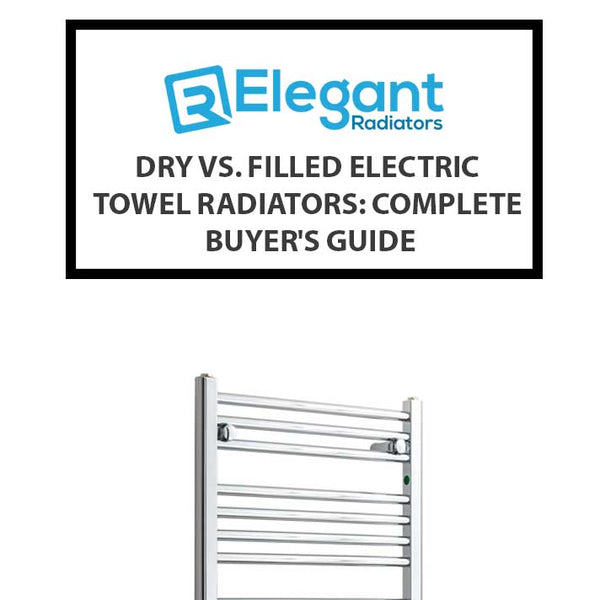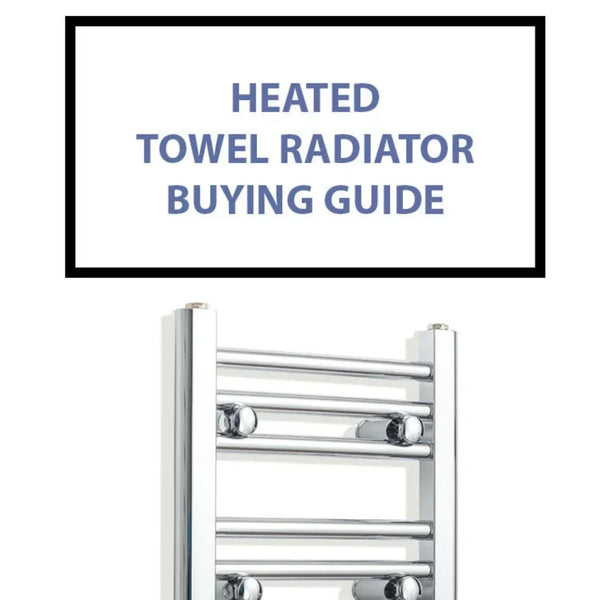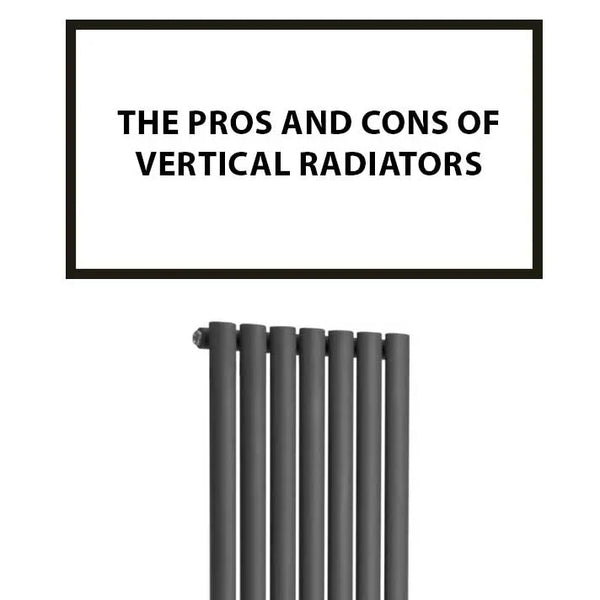Where to Install Radiators: Expert Guide for Maximum Heat Efficiency

You've invested in quality radiators for your home, but are you placing them in the right spots? The position of your radiators can make the difference between a toasty, evenly-heated room and cold corners that waste energy and money. Poor radiator placement is one of the most common heating mistakes we see, and it's completely avoidable with the right knowledge.
In this comprehensive guide, we'll reveal exactly where to install your radiators for maximum heat distribution, based on decades of experience at Elegant Radiators and feedback from thousands of heating engineers across the UK. Whether you're renovating, building new, or upgrading to a heat pump system, you'll learn professional placement strategies that actually work.
Why Radiator Placement Matters (More Than You Think)
The position of your radiators affects far more than just comfort. Poorly positioned radiators lead to:
- Higher energy bills - Your boiler or heat pump works harder to compensate for inefficient heat distribution
- Cold spots - Certain areas of the room never quite warm up, despite cranking up the thermostat
- Furniture limitations - Radiators in the wrong place force awkward room layouts
- Condensation and damp - Cold walls without heat sources are prone to condensation problems
- Reduced radiator lifespan - Restricted airflow from poor positioning puts strain on your system
The good news? Strategic radiator placement costs nothing extra but delivers measurable improvements in heating performance. Let's explore the golden rules.
The Golden Rule: Under Windows (And Why It Works)
The most effective position for a radiator is almost always under a window, particularly on external walls. This isn't just tradition - there's solid physics behind it.
Windows are the coldest surface in most rooms. When warm air from your radiator rises, it meets the cold air descending from the window, creating a "thermal curtain" that prevents cold drafts from spreading across the room. This convection current distributes heat evenly throughout the space.
Trade Tip
When positioning radiators under windows, ensure there's at least 100mm clearance above the radiator and 150mm from the window sill. This allows proper air circulation and prevents heat from being trapped uselessly against the glass. Column radiators work exceptionally well in this configuration due to their efficient convection design.
What If Your Window Is Too Wide?
For bay windows or extra-wide windows, you have options:
- Two smaller radiators - Better heat distribution than one large unit
- One radiator centered - If it covers at least 75% of the window width
- Vertical radiators either side - Perfect for narrow spaces between windows
Heat Pump Considerations: The Game-Changing Difference
This is where most standard guides fall short. If you're installing or planning a heat pump system, radiator placement requires different thinking.
Heat pumps operate at lower flow temperatures (typically 45-55°C vs 70-80°C for gas boilers), which means:
- You need larger radiators or more of them
- Placement becomes even more critical - you can't rely on brute force heat output
- Radiators should be on external walls wherever possible to combat heat loss
- Under-window placement is absolutely essential (not just recommended)
Heat Pump-Specific Placement Tip
Calculate your BTU requirements at heat pump temperatures, not gas boiler temperatures. We see this error constantly - homeowners size radiators for gas boilers then wonder why their heat pump struggles.
According to our data from over 300 heat pump installations in the Coventry and Midlands area, correctly positioning oversized radiators reduced running costs by an average of 18% compared to poorly placed standard-sized units.
Room-by-Room Radiator Placement Guide
Living Rooms & Lounges
Primary position: Under the main window on the external wall
Secondary position (large rooms): Opposite wall to combat cold air from doorways
Common mistakes to avoid:
- Placing behind sofas (blocks heat circulation and can damage furniture)
- Too close to TV units (heat affects electronics)
- Tucked in corners (poor heat distribution)
Trade insight: For open-plan living areas, position radiators to create "heat zones" rather than relying on one oversized radiator. Multiple smaller radiators give better control and more even heating.
Bedrooms
Primary position: Under window, centered on the wall
Important: Keep radiators at least 300mm from bed headboards. Direct heat on sleeping areas is uncomfortable and disrupts sleep quality.
Kids' rooms: Consider radiator guards if positioning close to play areas. Designer ranges include models with low surface temperatures ideal for family homes.
Kitchens
Best practice: This is tricky because wall space is limited by cabinets.
- Under window if possible (even if space is tight)
- Vertical radiators work brilliantly in the narrow space between units and doorways
- Avoid positioning directly next to cookers (temperature fluctuations confuse TRVs)
- Never behind integrated appliances (fire risk and wasted heat)
Bathrooms
Standard radiators: On external wall, away from shower/bath spray zones
Heated towel rails: Can go on internal walls - they're supplementary heat, not primary
Wet rooms: Position radiators to maximize air circulation and prevent damp
Hallways & Landings
Strategic position: Near the front door (counteracts cold air when door opens)
Alternative: At the base of stairs (warm air rises, heating upper floors)
Hallways are often under-radiatorized. They're transition spaces where heat escapes quickly. Don't neglect them in your heating plan.
Calculating BTU Requirements: Size Matters
Before finalizing placement, you need correctly sized radiators. The wrong size in the right place still won't heat your room properly.
Basic BTU Calculation Factors:
- Room volume (length × width × height in meters)
- Number and size of external walls
- Number, size, and glazing type of windows
- Floor type (concrete ground floor vs upper floor)
- Insulation quality
- Desired temperature
- Heat source (gas boiler vs heat pump)
Professional Installer Tip
Always add 10-15% to calculated BTU requirements as a safety margin. UK weather varies, and homes rarely match theoretical insulation values. This is especially crucial for heat pump systems where undersizing is harder to compensate for.
Common Radiator Placement Mistakes (And How to Avoid Them)
1. Blocking with Furniture
Sofas, curtains, and furniture block heat circulation. Maintain minimum 150mm clearance from furniture and 30mm from walls for proper air flow.
2. Positioning on Internal Walls Only
Heat loss happens through external walls. Radiators on internal walls can't combat this effectively. Always prioritize external walls.
3. One Massive Radiator Instead of Multiple Smaller Ones
Better to have two 1200mm radiators in a large room than one 2400mm unit. Heat distributes more evenly, and you have zone control with TRVs.
4. Ignoring Door Swing Radius
Radiators positioned where doors open into them is a classic DIY error. Always check door swing before finalizing positions.
5. Forgetting About Pipe Runs
Beautiful radiator placement is worthless if getting pipes there is impossible or requires ripping up floors. Plan pipe routes early, especially in existing properties.
6. Not Considering Future Furniture Layout
Think about how the room might be rearranged. Radiators positioned for current furniture could be problematic if you change layout later.
UK Building Regulations & Best Practice
While there's no specific regulation dictating radiator positions, Building Regulations Part L (Conservation of Fuel and Power) requires heating systems to be efficient. This indirectly affects placement:
- Systems must be designed to avoid unnecessary heat loss
- Controls (TRVs) must be accessible and functional
- Installations must allow for proper commissioning and balancing
For new builds and extensions: Building Control may query radiator sizing and placement if your heating engineer's calculations don't stack up. Ensure your installer provides proper heat loss calculations.
Listed buildings: Additional restrictions apply. Consult conservation officers before installing visible pipework or radiators that alter the character of period features.
Trade Professional Guidelines
For heating engineers and plumbers installing radiators for clients, these professional standards ensure quality installations:
Pre-Installation Planning
- Complete room-by-room heat loss calculations (don't just copy existing system)
- Photograph room layouts and wall positions
- Identify pipe routes before quoting
- Discuss furniture placement with homeowner
- Check for hidden obstacles (cables, other services)
Installation Standards
- Radiators level to within 2mm (use quality spirit level)
- Consistent height throughout property (typically 150mm from floor)
- Bracket spacing per manufacturer specs (usually max 600mm centers)
- TRVs on flow side, lockshield on return
- Inhibitor added to system
- Full system power flush for existing systems
Designer & Specialist Radiator Placement
Modern radiator designs open up placement options that weren't possible with traditional panel radiators.
Vertical Radiators
Perfect for:
- Narrow walls between windows
- Hallways with limited width
- Rooms with lots of furniture
- Creating visual features
Vertical radiator ranges include models up to 1800mm high, providing excellent heat output from minimal wall width.
Column Radiators
Traditional column radiators suit period properties and offer:
- Excellent heat output for size
- Classic aesthetic
- Wide range of heights and widths
- Perfect for under-window installation
Designer Feature Radiators
When radiators become architectural features, placement becomes part of interior design:
- Position to complement room symmetry
- Use as visual focal points on feature walls
- Pair with lighting to enhance effect
Testing and Adjusting After Installation
Once radiators are installed in optimal positions, proper commissioning is essential:
System Balancing
- Fully open all radiator valves
- Note temperature difference between flow and return pipes
- Adjust lockshield valves to achieve 10-12°C drop across each radiator
- Start with radiators closest to boiler/heat pump, work outward
TRV Programming
Set TRVs to appropriate temperatures for each room:
- Living areas: 20-21°C
- Bedrooms: 18°C
- Bathrooms: 22°C
- Hallways: 18°C
Performance Monitoring
After a week of operation:
- Check for cold spots in rooms
- Verify radiators heat evenly top to bottom
- Bleed radiators if needed
- Fine-tune TRV settings based on comfort
Upgrading Existing Radiator Positions
Many homes have radiators in less-than-ideal positions due to limitations when they were installed. If you're considering moving radiators:
Best Opportunities:
- During redecoration (walls already being worked on)
- When replacing old radiators anyway
- Alongside other plumbing work
- When heat pump installing (you'll likely need new radiators anyway)
Cost considerations: Moving a radiator typically costs £200-400 per unit in labor, depending on pipe runs required. But improved efficiency and comfort often justify the investment.
Coventry & Midlands Climate Considerations
Our location in Coventry gives us unique insight into Midlands heating requirements. The local climate affects radiator placement in specific ways:
- Prevailing westerly winds: West-facing walls typically need slightly higher BTU ratings
- Damp winters: Under-window placement is even more critical to prevent condensation
- Victorian/Edwardian housing stock: High ceilings and solid walls require careful heat loss calculations
- Modern estates: Better insulation means you can sometimes use smaller radiators, but placement still matters
We've helped thousands of Midlands homeowners optimize their heating over 20 years. Visit our Coventry showroom to see different radiator types and discuss placement for your specific property.
Conclusion: Get Radiator Placement Right From The Start
Strategic radiator placement costs nothing extra during installation but delivers long-term benefits: lower energy bills, better comfort, and a more efficient heating system whether you're running a traditional gas boiler or a modern heat pump.
Key Takeaways:
✓ Position radiators under windows on external walls whenever possible
✓ Size radiators correctly using proper BTU calculations
✓ Heat pump systems require larger radiators and even more strategic placement
✓ Plan for room layout and furniture placement before finalizing positions
✓ Multiple smaller radiators beat one oversized unit for even heat distribution
✓ Work with the architecture - vertical radiators for narrow walls, columns for period features
✓ Commission properly with balanced lockshields and correctly set TRVs
Ready to Optimize Your Heating System?
At Elegant Radiators, we've helped thousands of homeowners and trade professionals across the UK achieve optimal heating performance. Whether you're planning a new installation, upgrading to a heat pump, or simply replacing tired old radiators, proper placement transforms your system's performance.
Need Expert Advice?
Our Coventry team provides free technical consultations on radiator sizing and placement for your specific property.
Call us: 02477 220 780
Visit our showroom: See our full range of column, vertical, and designer radiators - all heat pump compatible
Trade Professionals
Register for your trade account to access:
- Professional discounts
- Technical spec sheets
- Dedicated account management
- Next-day delivery across the Midlands







